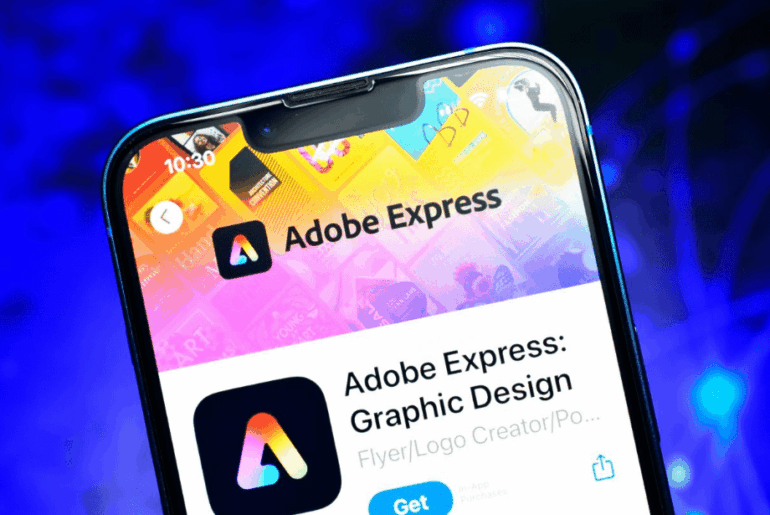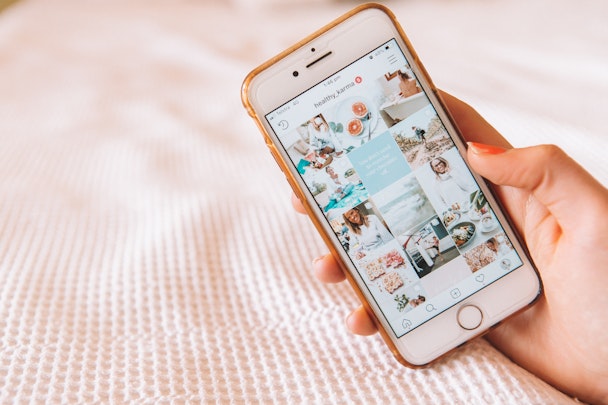By Tom May
Marketing agency Knowlton is a master at using humour in advertising. Its co-founder explains how you can replicate its success—with a little help from Adobe Express.
n a world saturated with intrusive marketing, Dan Knowlton has pioneered a refreshing approach. As co-founder of video and social media marketing agency Knowlton, Dan has perfected the art of what he calls Advertainment—a creative methodology that’s transforming how businesses connect with their audiences.
“Advertainment is our unique approach that fuses advertising with entertainment,” he explains. “Instead of pushing traditional, sales-heavy content that people tend to scroll past, we create content that audiences actually want to watch. It’s about being so engaging that it’s impossible to ignore while still weaving in strategic messaging that drives results.”
Intriguing, right? We caught up with Dan to learn more about his journey, how Advertainment is created in practice, the role that Adobe Express plays in his workflow, and his tips for crafting marketable content yourself.
Origin story
Knowlton was born of humble origins. In 2017, Dan and his brother Lloyd started their agency from their parents’ spare room after becoming “sick of intrusive, over-salesy marketing.” They began by producing funny videos to promote their company. Then, gradually, they realised the need to structure these videos strategically to drive business.
“For our clients, this approach has been a game-changer,” Dan reflects. “It’s helped us generate millions in trackable revenue and secure major contracts. Because people are not just seeing the content: they’re enjoying it, sharing it, and taking action because of it.”
Today, their client list includes Wahl, Sunny D, Boston Consulting Group, BBC Storyworks, and Channel 4. And the timing couldn’t have been better. After all, the social media marketing landscape has undergone significant shifts in recent years, requiring businesses to adapt their strategies accordingly.
“Social media marketing has become way more visual and fast-paced,” Dan observes. “It’s no longer about just pushing out long-form content or polished ads. People want something that feels more authentic and real. Video is massive, and short, engaging clips are what people are looking for.”
The right tools
Behind every successful creative is a toolkit that enables rapid ideation and execution. For Dan and his team, Adobe Express—the quick and easy content creation app for designers and non-designers alike—has become an indispensable resource for developing their content.
“Adobe Express is a really practical tool for us, especially when we’re working fast and need high-quality visuals,” Dan enthuses. “One specific way I use it is to make quick edits to pitches that our designers have created using other Adobe software. As I’m not a professional designer, it’s super-handy because it makes the process straightforward without needing advanced design skills.”
The team will also use Adobe Express to create social media graphics, video thumbnails and visual elements for campaigns. “It’s great for maintaining brand consistency while still being flexible enough to adapt to different campaign needs,” says Dan.
Standout features
The crucial thing is to boost speed and efficiency without sacrificing quality. Dan highlights specific features in Adobe Express that help square that circle. “The huge library of Adobe-quality templates is a lifesaver when we need to create visuals fast,” he notes. We can easily tweak them to fit our brand or the specific campaign.”
He particularly values the Brand Kit feature. “This keeps our branding consistent, especially when we’re working on multiple projects at once,” he explains. We can store logos, fonts, and colour schemes and apply them with just a few clicks.”
Adobe Express also excels at quick edits. “Things like background removal and resizing are just really easy to do without any hassle,” Dan points out. Finally, he praises the software’s collaborative tools. “Since the team often works on projects together, these make it simple to pick up where someone else left off,” he explains.
In summary, Dan explains that “Adobe Express is not about overcomplicating things—it’s a really practical tool that makes us more efficient.”
Real-world results
So, how does this all work in practice? Dan shares a specific example of how Adobe Express transformed a marketing campaign.
“We were working on paid creative assets for a large SaaS business we supported during their UK relaunch,” he recalls. “The client needed some tweaks to their existing designs to make them more engaging. We used Adobe Express to quickly adjust layouts, update messaging, and test a few different variations.”
The results speak for themselves. “The refreshed ads we created significantly outperformed the original assets they were using: higher click-through rates and way more engagement,” Dan reveals. “It just shows how making a few quick design tweaks can make a massive difference, especially when you’re working with a tight turnaround.”
No surprise, then, that Dan is now an Adobe Express Ambassador: you can find details of the programme, and how you can join it, here.
Content tips for small businesses
Dan has some valuable insights for small businesses aiming to create engaging video content using tools like Adobe Express. “Tell a story,” he urges. “Make your videos about people, stories, or real experiences rather than just products. That’s what makes them relatable. But make them short and sweet: People don’t have time for long-winded content. Get to the point quickly and make it punchy.”
Feeling overwhelmed by the pressure to create content? Then, step back and take a deep breath. “Don’t try to reinvent the wheel every time,” Dan stresses. “Some of our best content ideas come from seeing what’s already working for other creators, particularly on platforms like TikTok. If you see a format or trend that’s performing well, put your own spin on it rather than starting from scratch. Also, you don’t need to be everywhere at once. Pick one platform where your audience hangs out and master it before branching out.”
Furthermore, he emphasises consistency over perfection: “Use tools like Adobe Express to quickly repurpose content. For example, if you make a great video, turn it into a few shorter clips or add some graphics to create a new post.”
Finally, Dan encourages businesses to: “show your personality. Don’t be afraid to be a bit quirky or real; that’s what people connect with. But at the same time, stay on-brand. Use consistent colours, fonts and logos to make sure people know it’s you.”
The power of humour
The thing Dan’s best known for, of course, is his use of humour. And there’s no reason you can’t follow him down that route, too. “Humour is a game-changer when it’s done right,” he asserts. “Too many brands play it safe, but being funny is a great way to stand out and make people remember you.”
For inspiration, Dan suggests looking to the professionals. “Draw inspiration from comedy creators like Imogen Andrews, Al Nash, Jack Joseph, or even shows like Peep Show and Aunty Donna,” he urges. “These creators have a knack for making relatable, funny content that people can’t help but engage with.”
When it comes to creating your own content, he adds, “Don’t overthink it. Humour is about having fun, and if your content feels too forced, it won’t resonate. Experiment, learn from what works, and lean into that.”
A mission to transform marketing
What began as a rebellion against intrusive marketing has evolved into a successful agency with an in-house team of 15 and a pool of over 50 trusted freelancers. Dan’s mission is clear: “To rid the world of crap marketing”.
Through the power of Advertainment and with tools like Adobe Express at his disposal, Knowlton is showing that marketing doesn’t have to be an interruption—it can be content that audiences genuinely enjoy. As Dan puts it: “We make audiences enjoy the process of being convinced to buy your products and services.” And in today’s competitive landscape, that might just be the most valuable skill a marketer can offer.
Feature image credit: picsmart – stock.adobe.com





